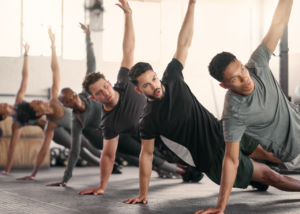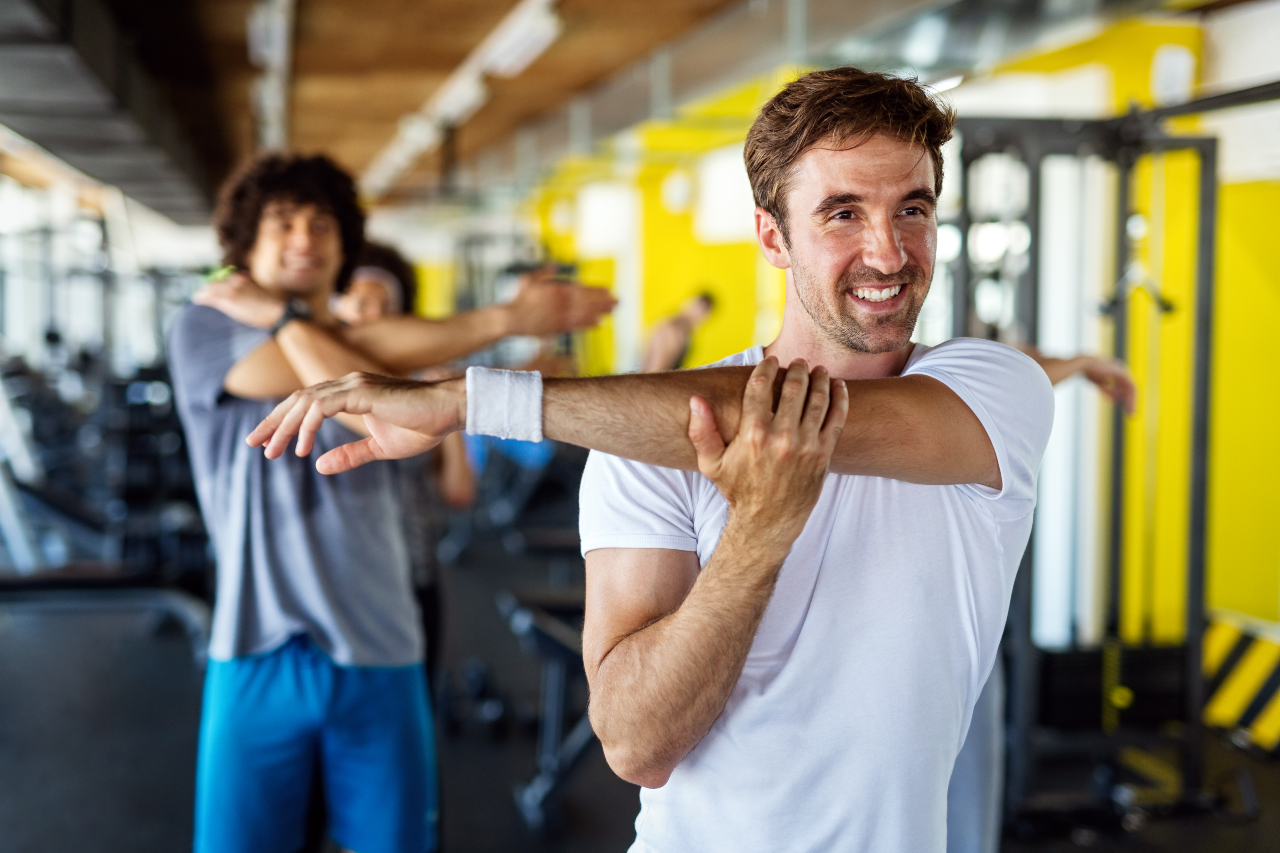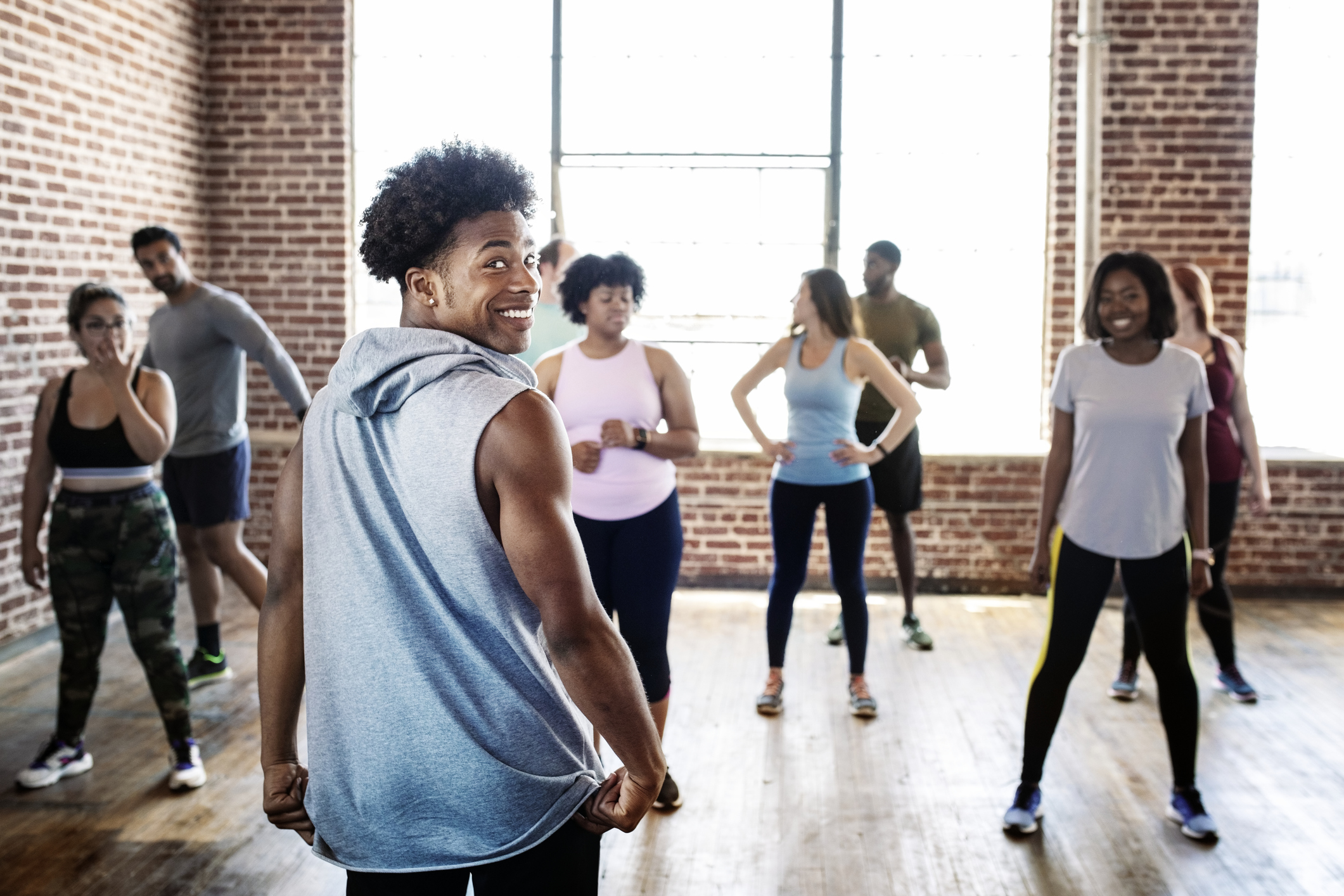Last Updated on November 20, 2025 by Niki
Will Brereton, Founder of SH1FT Fitness, explains why group exercise is a missing link in men’s mental health, and what the sector can do to encourage male participation.
When I was asked what we should talk about for Men’s Health Month, my answer came instantly: mental health. Yes, men need more movement, but what they really need is more connection. And in my view, group exercise an untapped opportunity to support men at a time when they need it most.
Men don’t do enough together
When I think about the state of men’s wellbeing today, one thing jumps out as an issue: isolation. Men often drop activity as they get older. They play football or rugby until injury or family life interrupts it. They might run or train with a mate, until that mate can’t. And unlike women, many men don’t replace that activity with something more sustainable or social.
But the beautiful thing about group exercise is that, unlike plans to go golfing with a friend, if one person can’t make it, the whole thing doesn’t fall apart. A class still happens. People still show up. The connection stays intact.
For men lacking in social connection, that could be huge. It’s unfortunate that a lot of men either look down on group training or don’t feel they belong there. And I’d like us – as an industry – to look at how we could change that. Without, of course, taking away from the fact that group exercise has always been and should continue to be a space where women feel comfortable and supported (and will still be the majority!).
A missed opportunity for men’s mental health
Exercising in a group makes you feel better – We all know that instinctively as instructors. You walk into a class tired, stressed or disconnected, and you walk out feeling lifted. Multiply that by weeks and months and you have something truly protective for mental health.
My very first class had a whole family coming – the son, the mum, the dad and the grandmother. I was 19 at the time and didn’t really appreciate how amazing this was. But looking back, it was actually really special. Group exercise can create exactly that intergenerational, community feeling – for everyone. But right now, most men simply aren’t experiencing it and I think we could do more to encourage them in.
The media is full of articles about the loneliness epidemic and male mental health. The fact that boys fall behind in school attainment, men have higher suicide rates, and consistently report lower happiness scores shows that something fundamental isn’t working. I’m not suggesting that group training alone can solve this… but I do genuinely think it can help, if we can unlock it.
Why so few men show up in the first place
The absence of men in group exercise isn’t because they’re not into fitness. Look at the explosion of Hyrox, CrossFit and mass-participation races. Clearly, the appetite is there.
But culturally, especially in the UK, men just don’t see studios as their space.
In New Zealand, where I’m from and where group training is huge, I can go to a class and it’s often 50/50 men and women. But in the UK (and in the US) it’s culturally accepted that group fitness is for women.
I’ve seen what happens when that perception shifts. I used to teach a Saturday morning class at a busy gym in London and when I switched from a choreographed class to something interval based, all the guys who had stood at the window for years finally gave it a go. It went from 25 people (90% female) to 40 people with an even split.
Why? Because, to put it bluntly, the guys were scared of looking like an idiot.
The movements in the class didn’t change – but they just didn’t have to move in time to the music anymore. Those guys on the gym floor had always been keen to give it a try… it was the fear of standing out, being judged, or getting the timing wrong that kept them away.
That’s something we can change, especially now that choreographed routines no longer rule the group training space.
 Gymtimidation is real… and group exercise can be that for guys
Gymtimidation is real… and group exercise can be that for guys
One of the greatest strengths of group exercise is that it reduces gymtimidation. The studio has always been a space where women who feel excluded or uncomfortable on the gym floor can move, train and belong. And any strategy to bring more men into group exercise has to protect that, not replace it.
But at the same time, we’re seeing huge shifts with women – especially Gen Z – confidently strength training and taking up space on the gym floor. There’s something to learn from that evolution. If women are breaking out of the areas they’ve historically been pushed into, maybe group ex can evolve too by opening the doors a bit wider for men who would actually benefit from being there.
The instructor sets the tone. The room sets the tone. The imagery sets the tone. If all of that signals “this is for women,” then men simply won’t feel included, even if no one is intentionally excluding them.
We don’t need male formats, and we don’t need to redesign group training – but we could make the environment feel welcoming to a broader range of people. More visible variety in who participates, and an overall vibe that says “you belong here” rather than “this isn’t for you.”
The ironic thing is that many men in professional sport – some of the strongest, most physical athletes on the planet – train with Pilates, possibly one of the most “female-coded” formats right now. They utilise Reformer-based strength work because it builds mobility and stability without hammering the joints. Yet your average male gym-goer will hesitate to walk into a Pilates class because it’s perceived as a female-dominated space.
This isn’t about changing the workout. It’s about changing the entry point.
Why midlife men are the biggest win (IMO)
I’ve been teaching group exercise since I was a teenager, but I’ve recently made the jump into the middle-aged category on the survey form. This has given me a better perspective, and I think “males aged 45 – 59” is one specific group who could benefit the most from group training. Guys who think they could still run a decent 5K if they really wanted to… they just haven’t “got round to it”.
This is the point in life where:
- sport drops off
- social circles shrink
- physical confidence can dip
- injuries become more common
- routines change
- children grow up
- work stress peaks or retirement looms
For many men, this is where the decline in physical health begins, which has a direct impact on mental health. And unlike women, who often have stronger social networks, men don’t always have other places to land.
Group exercise is the ideal bridge: social, physical, low-commitment and scalable.
How instructors can help bring men in
Here are some of the simple, doable things we can all do as instructors:
1. Show that men belong
This doesn’t need a campaign. A casual, authentic line like:
“Guys, you’re absolutely welcome here. Come join us.”
Sometimes that’s all someone needs.
2. Focus on connection and confidence, not choreography
Many men assume they need rhythm, coordination or experience. They don’t. Make that clear.
3. Explain that group exercise is different from the gym floor
I’ve lost count of the number of times a guy has come into class thinking group exercise will be an easy win, grabbed whatever the strongest female regular is lifting, and then been completely humbled. A lot of men underestimate how tough these workouts are, so a little ego-management upfront helps make sure they come back.
4. Partner with sports coaches
One of the tactics I could see having the greatest impact is getting sports coaches involved. Get the rugby coach, the football coach, the cricket coach doing off-season group classes with their teams and just see how this starts to filter into the mainstream.
Sport is a familiar doorway for men. We can use it.
5. Share stories of men gaining confidence
Even one man’s experience can open the door for many more. The more men see other men improving, the more they’ll feel comfortable with the concept themselves.
It all comes back to belonging
If I could leave instructors with one message, it would be this: What we do gives people a place to be with others, without pressure, without competition, without feeling exposed. It’s like going to a concert or a match – you’re part of something. Men need more of that.
Men’s Health Month is a brilliant opportunity to spotlight men’s wellbeing. Use it as a prompt to “bring a guy to class.”
But as a sector, we have an even bigger opportunity: to show men that exercise doesn’t have to mean performance, competition or getting everything right. It can simply mean moving together. And for many men, that could be life-changing.
And here’s the added bonus: if we can increase male participation in group training we grow the pie… classes get bigger, energy gets higher, and everyone wins – instructors, clubs, and the whole community.
Full annual membership starts at just £51!
For this, you get access to ALL of our expert content, plus:
- Discounted PPL
- £15m public and product liability
- £10m professional indemnity
- £2.5k personal property cover
- Accident cover
- Online class cover
- Studio and outdoor class cover
- Individual Assistance Programme
- Discounts on days out and activities
- Discounts on high street brands
- (and loads more!)




